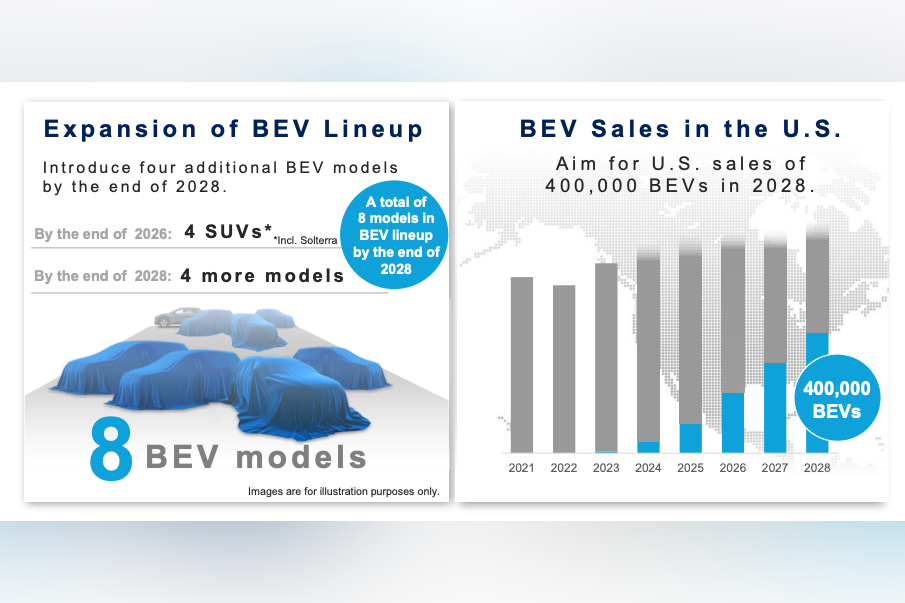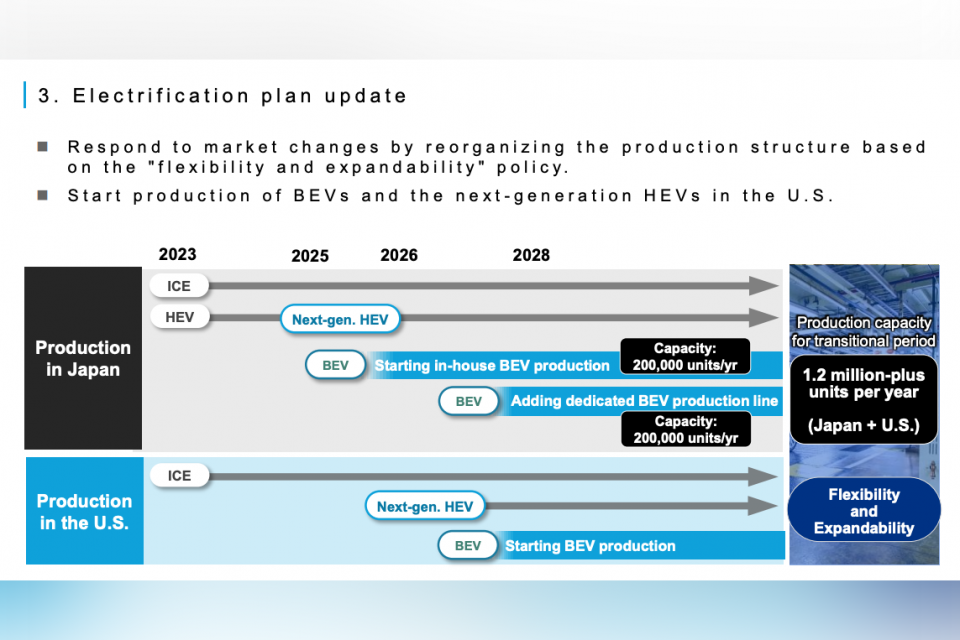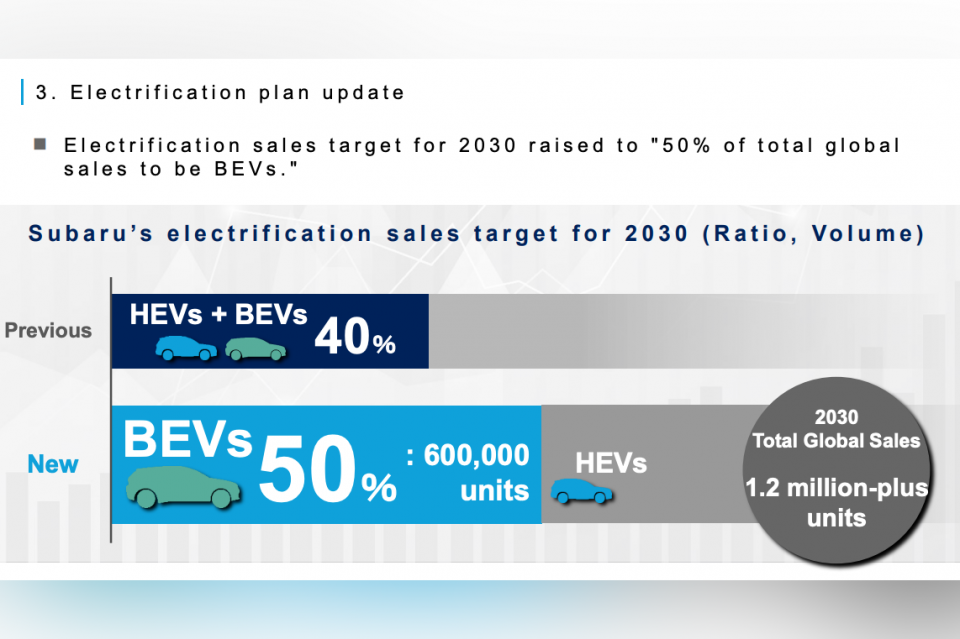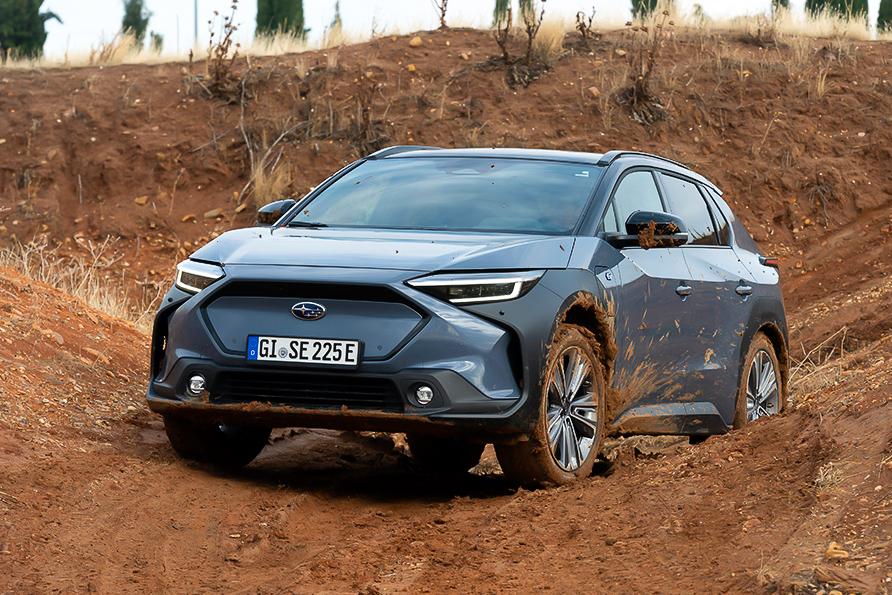

Anthony Crawford
1990 Lamborghini Countach review
5 Days Ago

Contributor
Subaru has announced revised electrification plans that will see it offering a total of eight different electric vehicles (EVs) by 2028.
The Japanese carmaker is still planning to stick to its previous pledge of offering four EV models, including the Solterra, by the end of 2026, but by the end of 2028 it will introduce four more electric models.
It’s unclear if the eight EVs Subaru will offer by the end of 2028 still includes the Solterra, however it’s shown among the seven other EVs concealed under blue sheets in a graphic in the company’s presentation.
In order to achieve this target Subaru will be starting EV production in the US from 2027. It’s unclear if it will leverage its existing relationship with Toyota.

This latest announcement follows a recent report from Automotive News that said a new Subaru three-row electric crossover will be built by Toyota in 2025 in the US.
In addition to its EVs, Subaru will begin producing its so-called ‘Next-gen HEV’ models in Japan from around 2025 and in the US from 2026 around. Subaru CEO Atsushi Osaki also confirmed these models will use Toyota’s petrol-electric hybrid technology.
Subaru previously pledged its EVs and hybrid models would account for 40 per cent of its total global sales by 2030, but it has now revised this figure to 50 per cent.
By 2030 Subaru aims to produce more than 1.2 million cars annually across its Japanese and US production sites, with 600,000 of the vehicles being all-electric.

Subaru is also pushing to grow its sales in the US. It forecasts it will sell 400,000 EVs there by 2028 and they will account for half its total US sales.
As previously reported, Subaru CEO Atsushi Osaki said the company is also focussing on growing sales in Australia.
Subaru still hasn’t launched its first EV, the Solterra, in Australia and it was recently delayed until the second half of this year.
The electric crossover’s arrival has been creeping later and later into 2023, with the company originally announcing last year it would touch down in the first half of 2023 before delaying it to mid-year.

Subaru hasn’t specified the impact of overseas recall activity for the delay and instead cited supply constraints. That’s different from Toyota, which hinted it was delaying the launch of the near-identical bZ4X to the fourth quarter of 2023 to obtain an updated model.
The Solterra is expected to come here solely in dual-motor all-wheel drive configuration, whereas single-motor front-wheel drive versions of it and the bZ4X are offered overseas.
The dual-motor version has 160kW of power and 337Nm of torque, up 10kW and 71Nm on the single-motor version.
Both variants use a 71.4kWh lithium-ion battery with a maximum DC charging output of 150kW and a maximum AC charging output of 6.6kW.

WLTP range figures for the related bZ4X put the FWD model at 516km and the AWD model at 470km, with claimed 0-100km/h times of 7.5 seconds and 6.9 seconds, respectively.
The AWD Solterra features a Subaru-developed X-Mode AWD control system, as in other Subaru SUVs. It’s also available with 20-inch alloy wheels, while the FWD model is only available with 18s.
The electric crossover measures 4690mm long, 1860mm wide and 1650mm tall on a 2850mm wheelbase. That makes it slightly longer and wider than a Forester. Ground clearance is 210mm, or 10mm less than a Forester, while kerb weight ranges between 1930kg and 2020kg.
The Solterra and bZ4X are underpinned by a new electric vehicle architecture, co-developed by Subaru and Toyota, which the former calls the e-Subaru Global Platform and the latter calls e-TNGA.

Globally, Subaru and Toyota ran into roadblocks while rolling out these models.
A crippling wheel hub bolt issue, which could cause the wheels to fall off, sparked a huge recall campaign and halted production for months – Toyota USA even offered to buy cars back – as the brands scrambled to find a solution.
The Solterra was also recalled in the US once again after some vehicles didn’t receive the proper fix for the hub bolt issue.
MORE: Everything Subaru Solterra MORE: Subaru plans range of new electric SUVs by end of 2026
Where expert car reviews meet expert car buying – CarExpert gives you trusted advice, personalised service and real savings on your next new car.
Jack Quick is an automotive journalist based in Melbourne. Jack studied journalism and photography at Deakin University in Burwood, and previously represented the university in dance nationally. In his spare time, he loves to pump Charli XCX and play a bit of Grand Theft Auto. He’s also the proud owner of a blue, manual 2020 Suzuki Jimny.


Anthony Crawford
5 Days Ago


Matt Campbell
4 Days Ago


James Wong
3 Days Ago


Max Davies
2 Days Ago


Josh Nevett
1 Day Ago


Marton Pettendy
16 Hours Ago